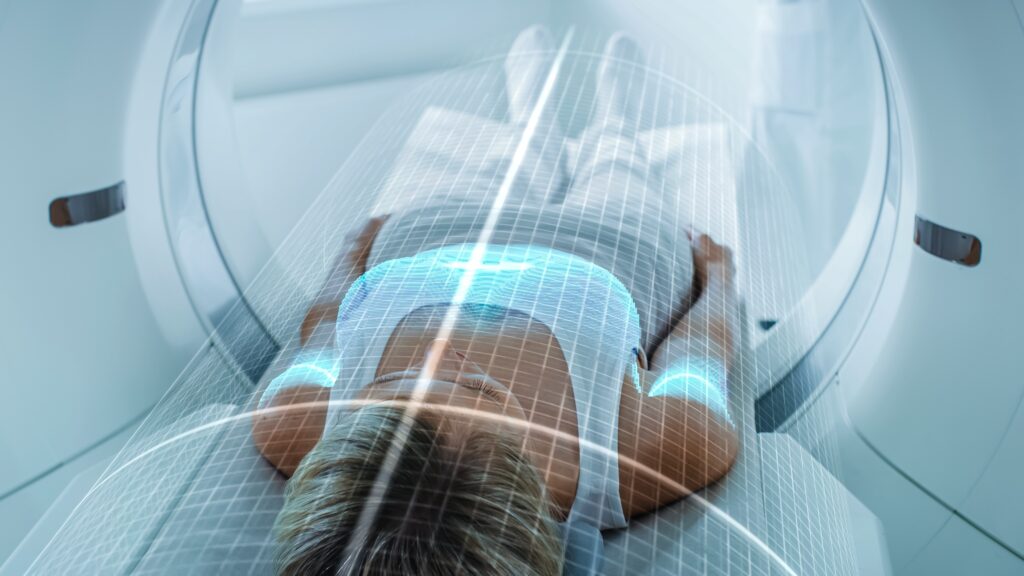AI will serve healthcare by augmenting clinicians, not replacing them
Evidence is growing to better leverage artificial intelligence to help organizations alleviate staffing shortages and enhance patient care.

With the recent growth in expectations for artificial intelligence, concerns have increased over worries that these technologies might replace many of the person-to-person interactions that are essential to healthcare.
But AI is not a replacement for human beings — it is a tool to make the interactions between healthcare professionals and patients more productive. The only questions are, “How?” and “To what extent?”
Relieving workers’ burdens
The healthcare field was suffering from staffing shortages even before the pandemic, but the problem has only gotten worse. In 2022, 40 percent of doctors and 49 percent of nurses reported they were experiencing burnout, and as many as 32 percent of nurses said they planned to leave the profession by the end of the year.
Whether it is reviewing records, spending time with patients in the clinic, assessing test results or following up, there is too much work for too few clinicians remaining in the field, and there are not enough hours in a day to provide the kind of patient-centric care that most clinicians would prefer to offer.
AI platforms can support emerging technologies designed to relieve some of the burden of overworked healthcare professionals, and efforts to develop these solutions are ongoing. AI-enabled technologies can make the job of caring for patients easier and more efficient.
Deep learning technology originally developed to improve two-dimensional MRI scans was recently FDA-approved for combination with additional MRI techniques, including PROPELLER (periodically rotated overlapping parallel lines with enhanced reconstruction) and 3D imaging.
In the study used for FDA approval, the MRI center at Fairfax Hospital leveraged this new technology with 3D scans of biliary and pancreatic ducts and reported that scan times were reduced by about one third. They also showed superior imaging for cervical cancer, musculoskeletal and neuroimaging, as well as shortened acquisition time for traditionally longer pelvic and abdominal scans, which often cause organ blur. Combined with this valuable AI program, PROPELLER can produce the same sharp images from even quicker scans.
Thanks to its quick optimization and adaptability, AI technologies also enable acquisition of more difficult images. A study recently published in the European Journal of Radiology reported significantly better cardiac imaging obtained with deep learning reconstruction of late gadolinium enhancement (LGE) cardiac MRIs to assess myocardial fibrosis. The lead author of the study predicts these techniques could also be used for assessing the prognosis for cardiac amyloidosis.
When used in combination with 4D flow scan at the Pediatric Radiology department of Stanford University, deep-learning algorithms were able to quickly and accurately assess cardiac anatomy and ejection fractions even with heartbeats as high as 150 beats per minute, which is particularly beneficial for imaging pediatric patients. Deep-learning techniques can also be useful in 2D imaging by reducing the need for breath-holding, making scans more comfortable for patients.
Improving patient care
The capabilities of AI systems are growing on a daily basis and have tremendous potential to continue improving workflows for healthcare professionals.
Clinicians at Innovation in Diagnostic Operations at Dasa, Brazil's largest integrated healthcare network, and Mt. Sinai in New York have noted that AI tools such as intelligent triage systems, clinical documentation automation, predictive analytics platforms, medical imaging analysis tools, virtual assistants, clinical decision support systems and remote patient monitoring can improve clinician efficiency in healthcare.
These tools prioritize cases based on severity, automate administrative tasks, provide predictive insights, assist with medical image analysis, offer virtual support, provide evidence-based recommendations and enable remote monitoring. By leveraging these AI tools, clinicians can streamline workflows, save time, make informed decisions, and enhance patient care and outcomes.
But concerns swirling around AI technology include the possibility that it could replace the very human interactions that are highly valued within healthcare. But in reality, these tools can connect the dots hidden among all the clinical data points to fill the widening gap between what patients need and what clinicians can provide.
For example, AI technologies, such as natural language processing and voice recognition, can automate clinical documentation processes. This includes tasks like transcribing patient-doctor interactions, extracting relevant information from medical records and generating comprehensive reports. Automating documentation reduces administrative burden, improves accuracy, and saves valuable time.
Implementing AI in clinical settings raises ethical considerations about data privacy and security, informed consent, bias and fairness, transparency, and human oversight. Healthcare organizations must protect sensitive patient data and obtain informed consent for the use of AI systems.
Addressing biases in AI algorithms is crucial to ensure fair treatment for all patients. Transparency and explanations for AI-driven decisions build trust and accountability. Human oversight is necessary to verify AI-generated outcomes and maintain the human connection in patient care. Overall, ethical guidelines, collaboration and equitable access are essential for responsible and ethical implementation of AI in healthcare.
Abu Mirza, MS, is the head of digital products and engineering at GE HealthCare and has overseen development of multiple healthcare-enhancing AI platforms.